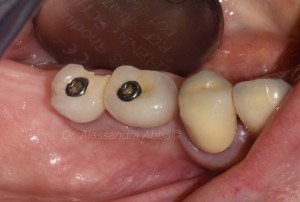
Is polymerization able to improve adhesive dentistry?
Lorenzo Breschi
In the era of minimally invasive interventions, adhesive dentistry significantly revolutionized the clinical practice of most dentists, allowing dental procedures that were considered unimaginable in the past without creating a retentive cavity and sacrificing sound dental structure. However, resin-based materials achieve their final properties after the end of the curing procedures that allow the setting of the polymer.
A failure of the adhesive restorations could be a consequence of inadequate polymerization of the material due to several intrinsic and extrinsic factors.
The review from the research group on Prof. Milena Cadenaro et al. analyzed the aspects able to affect the final curing of the material and state that photopolymerization is a clinical procedure that has several implications and is more complex than it seems.
Curing efficiency is proved to be dependent on:
- the characteristics of the material and the molecules included in the formulation;
- the operator technique;
- the quality of the light curing unit.
Accurate evaporation of the solvents may improve the polymerization of adhesive system as well as a prolonged curing time may increase the performance and stability of adhesive systems. Furthermore, the effect on curing reaction of molecules added to adhesive formulations to counteract the degradation of the adhesive interface over time has to be clarified.
CONCLUSIONS
The authors conclude that adequate polymerization of adhesive resins has been clearly correlated with the longevity of the adhesive restorations and is strongly influenced by the degree of conversion of the bonding system. Finally, as several factors may interfere with polymerization reaction, a meticulous observance of the adhesive application and the curing protocol is necessary to guarantee optimal properties of the material.
For additional informations:
The role of polymerization in adhesive dentistry
 Related articles
Related articles
Digital Dentistry 25 July 2022
Digital approach to replicate aesthetic and functional parameters in complete implant rehabilitation
Authors: C. Monaco, N. Ragazzini, L. Card, E. Evangelisti
The introduction of digital technologies in implant-prosthetic dentistry has allowed an improvement in the predictability of clinical results, the reduction...
Prosthodontics 23 May 2021
The clinical success of three-unit fixed prosthetic restorations in zirconia with 14-year follow-up
Zirconia (ZrO2) is a high-strength polycrystalline ceramic and is considered a suitable material for single crowns (SC) and fixed multi-unit dental prostheses (FDP), as it tolerates higher occlusal...
Prosthodontics 29 September 2020
Fixed dental prostheses: which is the gold standard material?
Metal ceramic has always been the golden standard for implant‐supported reconstructions in the past and the most investigated material in literature,...
Prosthodontics 12 February 2020
Which is the best adhesive cementation protocol for glass ceramic restoration?
Dentists must regularly determine the best adhesive cementation protocol for glass-ceramic restorations on posterior teeth. A few in vivo follow-up...
Prosthodontics 23 October 2019
Rehabilitation of endodontically treated molars: is better to choose endocrown or crown with post?
The restoration of endodontically treated teeth is always a topic of crucial attention for dentists. If until a few years ago, the therapeutic choice of...
 Read more
Read more
Periodontology 14 November 2025
This study was carried out to assess the oral hygiene awareness and practices amongst patients visiting the Department of Periodontology at Gian Sagar Dental College and Hospital, Ramnagar (Patiala).
Editorials 14 November 2025
Penn Dental Medicine shared its expertise in caring for persons with disabilities with dental care providers from throughout Jamaica at a 1 ½ -day hands-on continuing education program, held October...
News 14 November 2025
Dr. Thomas M. Paumier, a dentist in Canton, Ohio, is the new President-Elect of the American Dental Association (ADA). Dr. Paumier was elected at the ADA House of Delegates meeting in Washington,...
News 14 November 2025
Premier Dental Implants & Prosthodontics is proud to announce the opening of its newly renovated dental office and the launch of its new website
News 14 November 2025
Henry Schein One and AWS Collaborate to Transform Global Dentistry with Generative AI
Industry leaders join forces to bring advanced AI capabilities to dental technology platforms — redefining patient care, clinical efficiency, and practice performance worldwide














